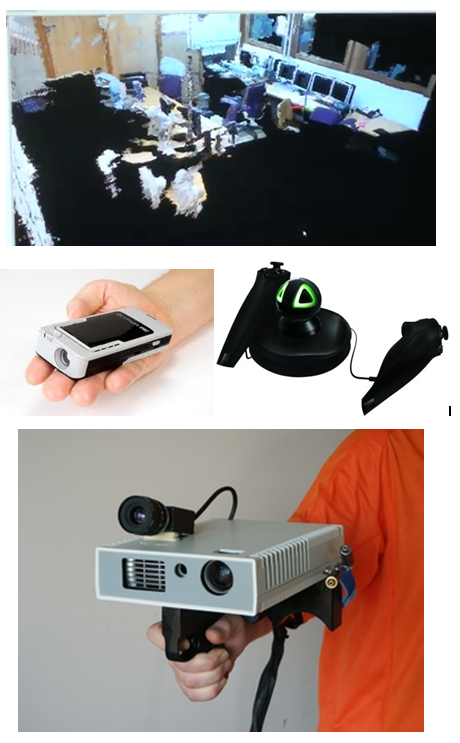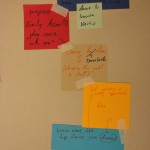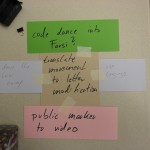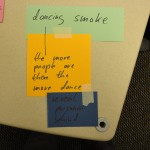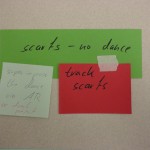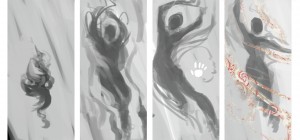DWIG Design Assignment 5: Nick
Wednesday, October 19th, 2011Digital Historical Reenactments
Premise:
Student-created theatrical settings are constructed in a digital environment, and the students control puppets to create reenactments of notable historical events.
Details:
We will use Unity3D to make an engine for digital theatrical stage creation. This engine will have the capability to add a limited number of actors, an arbitrary number of image plane backdrops, and additional prop items. These items may be represented as image planes, or possibly created in a 3D environment. The actors will be created from additional image planes, and controlled using either the Microsoft Kinect or DWIG’s Android puppet controllers. Prop items may also be linked to controllers and moved throughout the scene. Scene changes will be programmed in, and will occur by sliding one scene’s backdrop offstage while sliding another in.
Assignment For Students:
1. Go out into the world and gather photographs at a historical location. Frame these photographs as if they were backdrops or scenery items on a stage.
2. Using the photographs, create a number of scenes in our digital stage around this re-enactment.
3. Design digital actors using photographs as well.
4. Create a story or historical re-enactment around these designed scenes/actors.
5. Perform it live in front of your classmates?
DWIG’s Role:
We must create the engine for the construction of these settings. The current “puppet theater” interface already allows for puppet control using an Android phone. We would need to create ways for students to bring in an image file into a Unity application and apply it as a texture to a plane or other primitive 3D object. Additional tools for image positioning, resizing, and cropping may also be useful in this endeavor. We would also need to create an interface for constructing the puppets. If we went the KInect route, we would also have to create a way for linking motion as detected by Kinect into puppet movement. Finally, we would need to devise a means for arranging these backdrops on a stage. We could do this by having fixed backdrop positions, or by allowing the students to move them through the scene on their own. Also, a means for automatically saving and retrieving these custom scenes would be needed so that the students could work on them over time and keep them for future use. Finally, we would need to spend time instructing and helping the students in the use of this software, an inevitable task no matter what we go with.
Division of Work:
Nick: Unity Programming
Andy: More Programming?
Friedrich: Additional Programming?
Christine: UI Design
Ashton: UI Design
Xiao: UI Design
Some Combination of Us: Student Instruction
